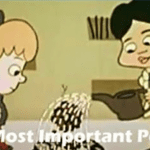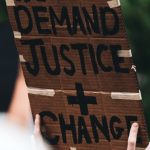 Weird Stuff
Weird Stuff  Weird Stuff
Weird Stuff  Our World
Our World 10 Ways Your Christmas Tree Is More Lit Than You Think
 Movies and TV
Movies and TV The 10 Coolest Stars to Set Sail on The Love Boat
 History
History 10 Things You Didn’t Know About the American National Anthem
 Technology
Technology Top 10 Everyday Tech Buzzwords That Hide a Darker Past
 Humans
Humans 10 Everyday Human Behaviors That Are Actually Survival Instincts
 Animals
Animals 10 Animals That Humiliated and Harmed Historical Leaders
 History
History 10 Most Influential Protests in Modern History
 Creepy
Creepy 10 More Representations of Death from Myth, Legend, and Folktale
 Technology
Technology 10 Scientific Breakthroughs of 2025 That’ll Change Everything
 Weird Stuff
Weird Stuff Ten Bizarre Facts About The Doge Meme
 Our World
Our World 10 Ways Your Christmas Tree Is More Lit Than You Think
 Movies and TV
Movies and TV The 10 Coolest Stars to Set Sail on The Love Boat
Who's Behind Listverse?

Jamie Frater
Head Editor
Jamie founded Listverse due to an insatiable desire to share fascinating, obscure, and bizarre facts. He has been a guest speaker on numerous national radio and television stations and is a five time published author.
More About Us History
History 10 Things You Didn’t Know About the American National Anthem
 Technology
Technology Top 10 Everyday Tech Buzzwords That Hide a Darker Past
 Humans
Humans 10 Everyday Human Behaviors That Are Actually Survival Instincts
 Animals
Animals 10 Animals That Humiliated and Harmed Historical Leaders
 History
History 10 Most Influential Protests in Modern History
 Creepy
Creepy 10 More Representations of Death from Myth, Legend, and Folktale
 Technology
Technology 10 Scientific Breakthroughs of 2025 That’ll Change Everything
10 Events That Unexpectedly Changed American Life
There seems to be no shortage of significant moments that changed the American way of life. The American Revolution alone would seem obvious, along with the Civil War and Abraham Lincoln’s assassination. More recently, World War I, World War II, and the Vietnam War were all cultural touchstones and massive, unsettling events that brought sweeping changes to the United States. Even less specific transitions altered the American way of life. Think of the internet, for example, and its massive effect on American media, entertainment, and culture in the present age.
But beyond the big changes and major moments, there have been a surprising number of events that seemed small—or, at least, hyper-local—at the time they occurred but have since blown up far bigger than anticipated. In this list, we’ll take a long look at ten of these historic events. When they occurred, they weren’t considered life-changing for future Americans. But years and decades later, the fallout from these events turned out to be massive.
Related: Ten Facts about the American Civil War That Few People Know
10 Truman Dumps Wallace (1944)
It’s difficult to think of a world now where the United States and the USSR didn’t wage the Cold War from the end of World War II through nearly to the end of the century. But things didn’t have to be that way. The Cuban Missile Crisis could never have occurred, and the infamous duck-and-cover drills schoolchildren once practiced might never have existed had one minor change been made way back when.
In July 1944, Harry S. Truman replaced incumbent Vice President Henry Wallace on the Democratic ticket ahead of the nation’s next election. President Franklin Delano Roosevelt was popular and had considerable momentum as the Allies marched ever closer toward a gruesome but critical victory in World War II. All the while, Roosevelt had a secret plan for how to work with Joseph Stalin and the Soviet Union after the war’s end. One problem was that FDR didn’t tell Truman, Wallace, or anyone else about the plan.
So, VP Wallace was purged from the Democratic ticket, and less than a year later, FDR died. With Truman alone in charge, plans inevitably changed. And it was made all the more challenging because Truman had very little foreign-policy experience. Quickly, the State Department urged him to act on a potential postwar threat from the Russians. Worried that the U.S. could get caught in a vulnerable position just after having worked so hard to free Europe from the Nazis, Truman opted for strength and power. In the following years, his hard-line approach solidified into what became known as the Truman Doctrine: democracy good, communism bad, end of discussion.
Meanwhile, Wallace was still hanging around. He had been named FDR’s Secretary of Commerce after the 1944 election and was busy fulfilling his duties as a Cabinet member. He was also offering his own thoughts about dealing with the Soviets—and they were very different from what Truman wanted. In one speech, Wallace outlined an idea for working with the Soviet Union in peace and harmony, rather than portraying them from the start as communist evildoers. Truman hated the speech, thought it undermined his position as Commander in Chief, and quickly dismissed Wallace from the Cabinet.
Just like that, the country’s earliest voice of cooperation was gone from a policy-making post. And just like that, the Cold War began—even though it would be a while before it ramped up in earnest. Still, it makes one wonder: what would have happened if Henry Wallace had been FDR’s VP instead of Truman? What if the United States had followed Wallace’s lead on trying to work in parallel with the Soviets and not against them? How differently would the next five decades of foreign policy have gone had that one little 1944 presidential-ticket change not happened as it did?[1]
9 The Great Migration (1915)
It’d be easy to think that how demographics work today in America was how it always used to be. Generally, big cities from coast to coast hold significantly more Black residents than most small towns and rural areas. But this wasn’t always the case. For much of U.S. history, Black populations were primarily rural and Southern—and very often didn’t appear in large numbers elsewhere.
Then came World War I. The war broke out in Europe in 1914, but the Americans joined the fight in 1917. The massive conflict required massive manpower. American men were shipped off to fight on the front lines in France and elsewhere in Western Europe. Those who stayed behind were asked to work double-time to produce supplies for the war effort.
As scores of men were sent to Europe, a massive labor shortage hit many American cities. Places like New York City, Boston, Chicago, and Philadelphia struggled to find workers beginning in 1915. At the same time, Black families had long since grown tired of mistreatment in the South. Slavery had ended half a century prior, but sharecropping was brutally hard, and Jim Crow segregation made life a living hell. When the labor calls started to go out from factories in northern cities, able-bodied Black men heeded the call—and brought their families with them.
The Great Migration took place in 1915 and lasted for the next several decades. Black families fled the oppressive South for better-paying jobs in northern urban centers. After World War I ended, they stayed in cities like Chicago, New York, and Philadelphia. When the Dust Bowl and Great Depression hit a decade later, even more Black families moved west for manufacturing jobs. And as World War II began, labor shortages again drew thousands to urban centers.
Today, it’s easy to assume that many Black Americans have always lived in metropolitan areas. But that wasn’t always so. Black-majority communities like Harlem, Chicago’s South Side, and Los Angeles’s Compton and Watts owe their boom to the Great Migration that began in World War I.[2]
8 Triangle Shirtwaist Fire (1911)
On March 25, 1911, a fire ripped through the garment factory at the Triangle Shirtwaist Company in Manhattan. Hundreds of women were inside the factory then—far more than should have been. More than 600 workers, most immigrants, were jam-packed at long sewing tables in 12-hour shifts for very low wages. Many spoke little or no English and had no realistic opportunity to seek safer employment.
When the fire broke out, hundreds of women fled as it spread. But it spread quickly and unpredictably, and not all the women working inside the factory made it out alive. When the dust finally settled, 146 women had been trapped and killed. Dozens more were injured, unable to escape due to locked doors, long and narrow hallways, and a lack of emergency exits. The tragedy was immediately national news and stayed that way for a while.
Beyond the headline-grabbing deaths and fallout for the Triangle Shirtwaist Company, the factory fire set in motion decades of worker-safety changes. New York labor activist Frances Perkins worked for years after, inspired by the fire, to secure better and safer conditions for American workers. She later became Secretary of Labor under President Franklin Delano Roosevelt. In that role, she pushed for worker protections, labor laws, standardized hours, and days off.
Perkins wasn’t the only one inspired to act. Other labor activists used the fire as a rallying cry for workplace reform. It took a massive tragedy to set the wheels in motion, but decades later, the Occupational Safety and Health Administration was created. Along with it came stringent guidelines for protecting workers on the job, and workplace accidents steadily declined.[3]
7 The Prophet Is Released (1923)
The period after World War I was a difficult time for people all over the globe. Millions were left reeling from the effects of the massive war. So it makes sense that many were searching for something inspirational on which to find their footing. In 1923, they got just that: The Prophet.
Lebanese-born philosopher and poet Khalil Gibran was living and writing in Boston when he published The Prophet. It was a grouping of inspirational messages and sermons supposedly delivered by a prophet. The messages touched hearts, centering on knowledge, beauty, truth, love, marriage, work, and family life. They were simple and poignant—an exact mix of positivity and self-affirmation. They promoted individuality and the pursuit of one’s dreams… and became an instant hit.
Over the next several decades, The Prophet became one of the world’s most-translated philosophical works. It inspired Americans to chase their dreams through the Roaring Twenties and comforted families during the Great Depression. It was even printed and sent to soldiers during World War II through the American Services Editions program.
Across the decades, The Prophet has influenced major public figures, politicians, entertainers, and everyday people. Its uplifting message reportedly impressed figures as diverse as Elvis Presley, Johnny Cash, and Salma Hayek, who produced a 2014 film based on the book. Part inspirational tome and part self-help guide, The Prophet perfectly mirrored 20th-century America and has stood the test of time.[4]
6 Harry Hopkins’s Rise (1933)
After Franklin Delano Roosevelt was elected president in the depths of the Great Depression, he knew he needed to act fast. So he brought in one of his most trusted advisors to direct New Deal relief programs. That man was Harry Hopkins, and his push to get aid out to average Americans during the massive economic downturn changed the course of the 1930s—and the country’s belief in a social safety net for years to come.
Hopkins, a former social worker, officially began his job as head of the emergency relief program on May 22, 1933. He didn’t even have an office then, but he found a desk and dragged it into a hallway to begin working at once. Then he did what no adviser before him had done: he started cutting relief checks to Americans desperately in need. It was all part of FDR’s New Deal policies, but Hopkins’s decisiveness quickly angered Washington insiders used to the old way of doing things.
In one now-famous exchange, when a D.C. power player complained about Hopkins’s use of federal funds to aid struggling Americans, the social worker–turned–political advisor replied, “People don’t eat in the long run; they eat every day.” Thankfully, that attitude stuck with his team. In his first two hours on the job, Hopkins cut over $5 million worth of checks to help those flattened by the Depression.
Hopkins’s aggressive push to help working Americans directly, and his determination to do it with speed, proved critical to keeping the country afloat. His move injected spending money into the economy and kept people in their homes. Were it not for Hopkins’s urgency, it’s impossible to know how bad the Great Depression might have become.[5]
5 Virginia School Walkout (1951)
On the morning of April 23, 1951, sixteen-year-old Barbara Johns led a walkout of more than 400 of her fellow Black classmates at Robert R. Moton High School in Farmville, Virginia. Johns and her classmates were protesting what they felt were inadequate and unacceptable segregated facilities for Black students. So they walked out and boycotted the school until its all-white board addressed their complaints.
Johns rightly saw this as a chance to draw national attention to the students’ plight. She wrote to an NAACP attorney about the walkout, and he agreed to file a lawsuit on their behalf. That suit was soon consolidated with four similar cases from around the country. By 1954, the U.S. Supreme Court was hearing those combined cases in a landmark moment for civil rights.
Of course, you know that 1954 Supreme Court case as Brown v. Board of Education of Topeka, one of the others with which Johns’s movement was consolidated. The “Brown” case soon became famous for outlawing public school segregation. Meanwhile, Johns’s activism was the pioneering push that eventually led to desegregation in schools across the United States—even if few remember her or the Farmville walkout as where it began.[6]
4 Birth Control Goes Public (1960)
On May 9, 1960, the birth control pill was first given early approval by the Food and Drug Administration. The first commercially available pill, Enovid-10, was produced by the G.D. Searle Company in Chicago. Its history stretched long before that, though. Research on a potential contraceptive pill was initially commissioned decades earlier by Margaret Sanger and funded by philanthropist Katherine McCormick. Sanger’s 1916 debut of the country’s first birth control clinic had envisioned exactly this day.
By the 1950s, biochemist Gregory Pincus of the Worcester Foundation for Experimental Biology was researching the idea full-time. Working with Harvard Medical School gynecologist John Rock, he began clinical testing of the pill in 1954. They refined its chemistry over the next six years to ensure safety and effectiveness.
When that fateful May day came in 1960, life changed for millions of Americans. Women could think differently about sex and pregnancy. They suddenly had options to delay family planning and pursue education or careers instead. The pill offered freedom to choose when to become a mother—a freedom that reshaped society and helped launch the sexual revolution.[7]
3 Howard Smith Asks for More (1964)
Women may have won the right to vote in 1920, but little more was gained for more than four decades after that. That started to change culturally with the birth control pill in 1960, as we’ve just learned. But politically, women still lacked specific protections from discrimination in American law. That all changed in 1964 with the landmark Civil Rights Act—but only thanks to an unexpected twist.
Representative Howard Smith, a longtime Democrat from Virginia, was a staunch segregationist who opposed granting civil rights to Black Americans. But instead of merely voting against the bill, he thought there might be a way to torpedo it by adding to its text. As the Civil Rights Act came through Congress, it famously sought to ban discrimination based on race, religion, and creed—but it didn’t mention sex. Smith realized that could be a point of contention. So he offered a one-word amendment: adding “sex” to the list of prohibited discriminations.
Smith’s move may have been cynical—or consistent with his prior record supporting some women’s rights—but it backfired. The bill passed with his amendment intact. President Lyndon B. Johnson signed it into law later that year, and it became the law of the land. Women across the country celebrated alongside Black Americans, and soon, many pushed for greater rights and autonomy as feminism swept the nation. All from one seemingly insignificant one-word amendment![8]
2 Pneumocystis Pneumonia Is Reported (1981)
On June 5, 1981, the Centers for Disease Control released a new Morbidity and Mortality Weekly Report. Those reports were regular bulletins on public health nationwide—but this one was different. It described a new infection that severely weakened the immune systems of five gay men in Los Angeles. Today, we know the disease as AIDS.
At the time, the CDC was at ground zero, trying to understand what doctors were seeing. The report briefly described Pneumocystis carinii, a then-rare immune-system infection. The authors had no idea they were documenting the start of one of the most devastating epidemics in modern history. Doctors who read that brief report also had no idea they would soon be on the front lines of a sweeping public-health crisis.[9]
1 The Tehran Embassy Occupation (1979)
Beginning on November 4, 1979, a group of Iranian militants stormed the gates of the United States embassy in Tehran and took control of the grounds. Americans inside were held hostage for 444 days. The militants demanded the extradition of the deposed Shah to face trial in Iran and the return of his wealth.
The crisis transformed U.S.–Middle East relations. Iran, once an ally, became a bitter foe. The U.S. quickly aligned more closely with Saudi Arabia and supported Saddam Hussein’s Iraq as a counterbalance to Iran—decisions with repercussions that still echo today.
On the home front, the siege rocked Jimmy Carter’s administration. The public saw Carter as ineffective in dealing with the crisis. A failed rescue mission only deepened that perception and contributed to his loss to Ronald Reagan in 1980. Reagan’s presidency and the conservative realignment that followed reshaped the nation for decades—a chain reaction set off by one embassy occupation in 1979.[10]








